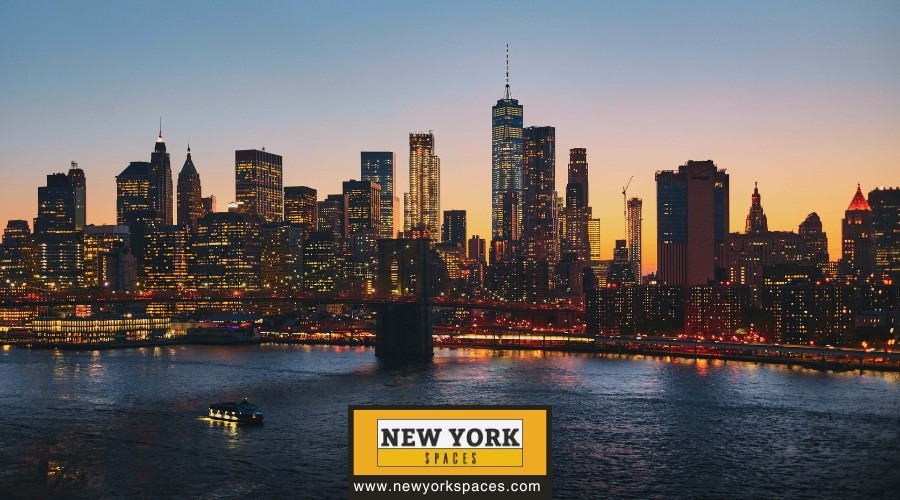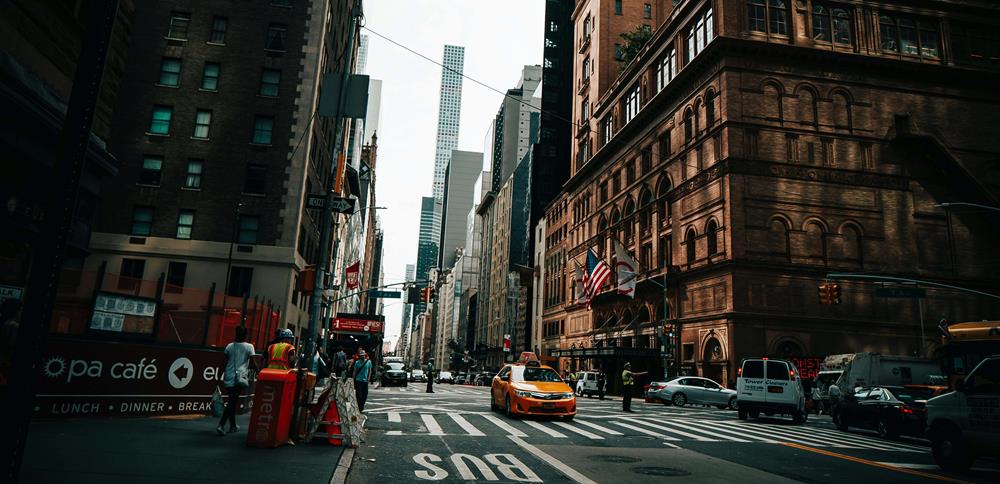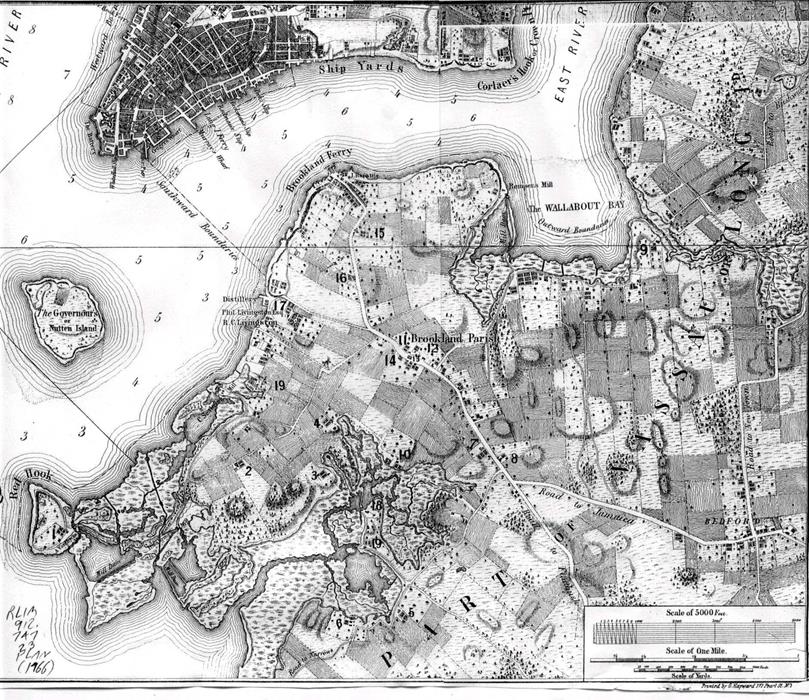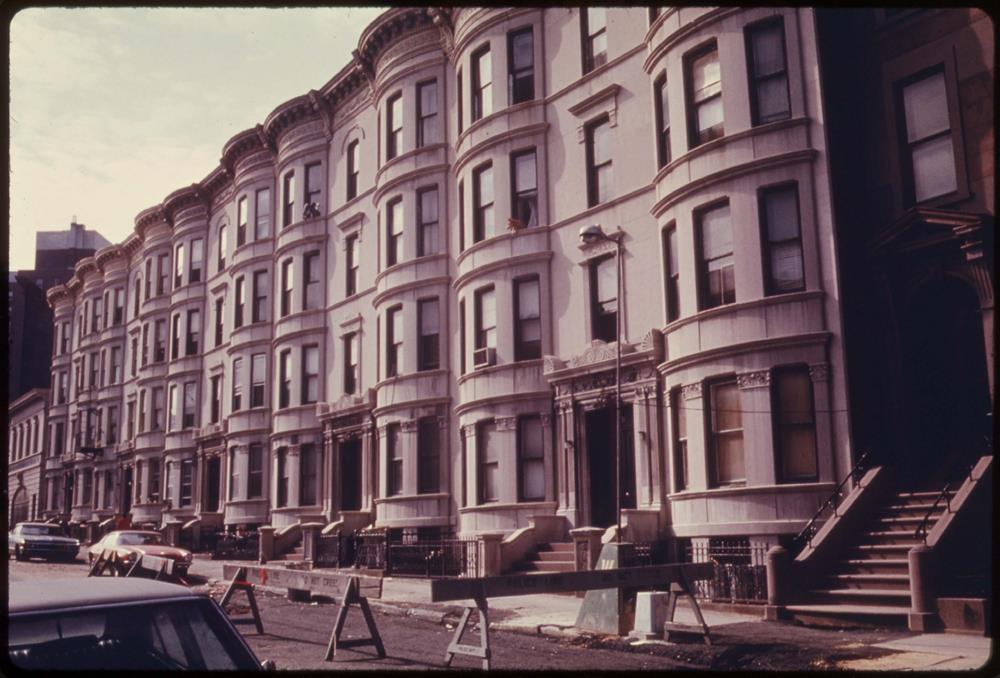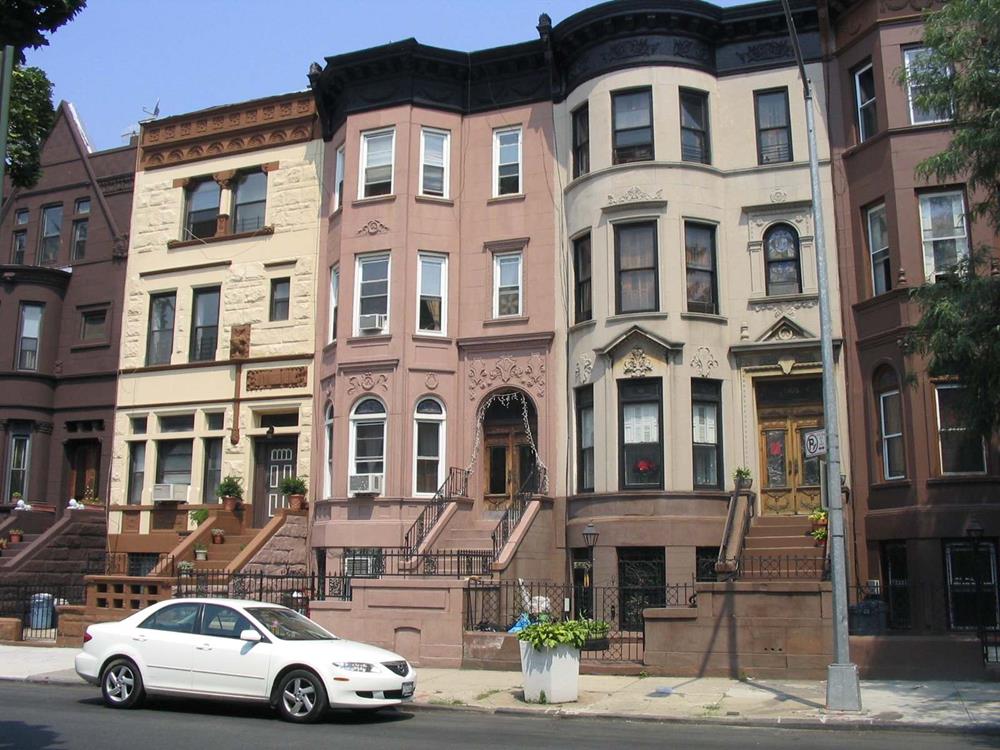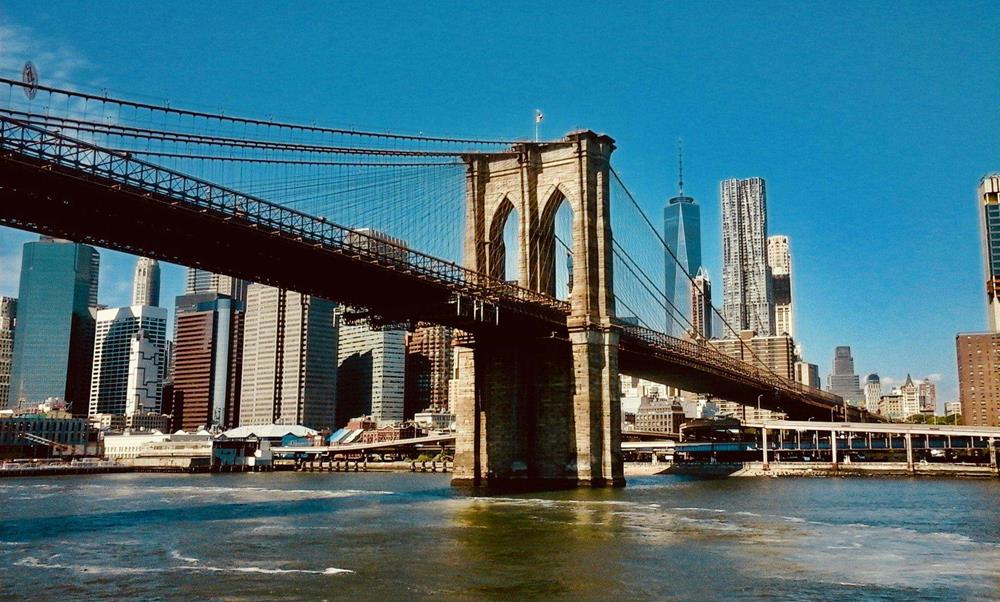Brooklyn residents are usually proud of their locality. The older generation reminisces about old-school Brooklyn, while the younger generation might even prefer to live in the upscale area of Manhattan. Why is that so? It’s probably because of its rich heritage and culture, which are brought about by its interesting history.
Background
Brooklyn is New York’s most populous borough and the most populous county, with more than 2.7 million residents. The size and population of this borough mean that if it were an independent city, it would be the fourth largest in the whole of the United States. In fact, if the population continues to grow at the current rate, it might even become the third-largest by population, surpassing Chicago.
It’s also said that about one-seventh of Americans can trace their family roots back to Brooklyn at some point. Today, one can walk down a street in this borough and hear all kinds of languages within a couple of minutes, as it is home to many different immigrants from around the world. The borough has a significant Jewish population, sometimes described as “the most Jewish spot on Earth,” making up about a quarter of its residents.
Named after the Dutch town of Breukelen, Brooklyn is bordered by Queens and boasts numerous connections to Manhattan, including several bridges and tunnels across the East River and links to Staten Island via the Verrazzano-Narrows Bridge. Covering a land area of 69.38 square miles and a water area of 27.48 square miles, it is New York State’s fourth-smallest county by land area.
In recent decades, Brooklyn has seen a cultural and economic renaissance. It has become a popular destination for hipsters, resulting in gentrification and significant rises in property prices, affecting housing affordability. Some newer developments in the area include mandates for affordable housing units. Furthermore, parts of Brooklyn have transformed into hubs of entrepreneurship, high-technology startups, postmodern art, and design.
Early Beginnings and Colonial Era
Brooklyn’s story begins long before European settlers arrived, with the land initially inhabited by the Lenape people. Known for their connection to the natural world, the Lenape thrived in an environment rich in rivers and forests. This early chapter of Brooklyn’s history is integral to understanding its foundations.
The transformation of Brooklyn began in earnest with the arrival of the Dutch in the early 17th century. Around 1636, Dutch settlers, extending their reach from New Amsterdam (now Manhattan), began establishing plantations in what would become Brooklyn.
The area’s first Dutch community was named Breuckelen in 1646, after a town in the Netherlands, symbolizing the start of a significant European influence in the region. These early settlers initially placed their farms along an Indian trail leading southward from the East River. The importance of the East River in connecting Brooklyn and Manhattan was underscored in 1642 with the establishment of a regular ferry service, crucial for the movement of people and goods.
Breuckelen was one of six Dutch towns within what is now the borough of Brooklyn, each with its own unique contributions to the area’s development. The patchwork street pattern seen in modern Brooklyn is a direct result of this early segmented settlement. Places like Dumbo, now known for its arts scene and transformed warehouses, trace their roots back to these early settlements.
The Dutch settlers introduced significant agricultural, religious, educational, cultural, and political developments. They cultivated rich farmland, contributing significantly to the colony’s sustenance and economic stability. The Dutch Reformed Church played a central role in community life, exemplifying a degree of religious tolerance unusual for the time. Education was highly valued, with schools typically run by the church. These early schools laid the groundwork for the borough’s intellectual and cultural development.
Brooklyn’s early political landscape was shaped by the Dutch colonial government, organized under a director-general appointed by the Dutch West India Company. The creation of a council known as the Nine Men to advise the director-general was a significant step in forming a self-governing colony, influencing early American political systems.
However, this era was not without its conflicts. The Dutch settlers and Native American tribes, particularly the Canarsee, experienced fraught relations, often resulting in violent skirmishes and the displacement of native peoples. Misunderstandings and differing cultural interpretations of land ownership led to these tensions.
By the late 17th century, the British captured New Netherland, and the area began its transition into the English colonial system, further altering Brooklyn’s trajectory.
19th Century Growth and Industrialization
During the 19th century, Brooklyn was under significant transformation, marked by rapid industrialization and monumental engineering feats. It was at this time when diverse industries that catalyzed the city’s economic development were established. Technological advancements spurred a manufacturing boom in sectors like textiles and shipbuilding, particularly at the Brooklyn Navy Yard.
This period also witnessed the construction of railways, which played a crucial role in connecting Brooklyn to broader markets and facilitated the transportation of goods and people.
One of the most iconic symbols of this era, the Brooklyn Bridge, emerged as a marvel of engineering and a testament to the Industrial Revolution’s impact on the city. Completed in 1883, the bridge connected Brooklyn to Manhattan, revolutionizing transportation and trade between these two burgeoning areas.
The bridge’s construction process itself was an engineering milestone. Massive wooden and steel chambers, known as caissons, were sunk into the East River to lay the foundations for the bridge towers. Workers, often immigrants known as “sandhogs,” labored in these challenging conditions to excavate the riverbed, facing hazards like “the bends” due to rapid decompression. The bridge’s completion helped migration and business growth in Brooklyn.
Despite these advancements, Brooklyn’s industrialization was not without challenges. Issues such as labor disputes, overcrowding, and pollution emerged as byproducts of rapid urban and industrial growth. These challenges laid the foundation for the future development of Brooklyn as a dynamic urban center.
The construction of the Brooklyn Bridge marked a pivotal moment in the city’s expansion. Its completion catalyzed the development of surrounding neighborhoods, transforming Brooklyn into a vibrant and bustling borough. This iconic suspension bridge not only served as a crucial transportation link but also played a significant role in the urbanization of Brooklyn, helping to shape its identity as a major center of commerce and culture.
Social and Demographic Shifts in Brooklyn in the 20th Century
Brooklyn’s demographic landscape has undergone significant shifts throughout its history, marked by waves of immigration, changes in residential patterns, and evolving cultural diversity.
Historically, the borough has been a melting pot, with its European American population primarily consisting of descendants from Eastern and Southern Europe, alongside Irish, German, and Scandinavian communities. This diversity has shaped Brooklyn’s neighborhoods, with specific areas predominantly inhabited by particular ethnic groups, such as Italian Americans in Bensonhurst and Russian Americans in Brighton Beach.
After the War
Post World War II, neighborhoods like Bedford-Stuyvesant, which were once predominantly Jewish and Italian, gradually transformed into primarily African American communities. This shift was part of a broader pattern of racial and ethnic change in Brooklyn, which saw significant migration and settlement shifts.
In the post-war era, Brooklyn also witnessed a significant shift with the phenomenon of suburbanization. Many residents moved to suburban areas, leading to population decreases and urban decay within Brooklyn. However, this trend also set the stage for revitalization and cultural renaissance, as abandoned areas and buildings were renovated and repurposed, creating new public spaces and community programs. The transformation of the Williamsburg waterfront and the revitalization of Downtown Brooklyn are prime examples of these efforts.
Late 20th Century to Early 21st Century
The latter part of the 20th century and early 21st century has seen a resurgence of the white population in areas undergoing gentrification, such as Bushwick and Crown Heights. This process of gentrification, while bringing economic development, has also raised concerns about displacement and the alteration of long-standing community fabrics.
Recent studies have pointed out that gentrification contributes to reshaping the socioeconomic landscape of neighborhoods, affecting where people of different races and classes live. It’s a complex mechanism that can restructure broader patterns of segregation and impact residential mobility, leading to emergent patterns of residential stratification.
Despite the growing diversity in Brooklyn and across the United States, residential segregation remains a persistent challenge. Segregation by race and income has been amplified by policies such as single-family zoning, which was historically adopted to create and maintain racially segregated neighborhoods. This segregation has had far-reaching implications, affecting access to quality education, healthcare, and economic opportunities.
Today, Brooklyn’s demographic continues to evolve, reflecting the broader trends of an increasingly diverse and multifaceted society. Yet, the challenges of segregation and inequality remain critical issues that shape the borough’s social and economic landscape.
Cultural Landmarks and Contributions
Brooklyn is home to iconic landmarks that reflect its rich history and diverse and vibrant community.
Ebbets Field
Home to the Brooklyn Dodgers until 1957, Ebbets Field was a cultural cornerstone for Brooklyn. The baseball field gained historical significance when Jackie Robinson, as a Dodger, broke Major League Baseball’s color barrier in 1947.
Brooklyn Academy of Music
The Brooklyn Academy of Music, America’s oldest performing arts center, has a history that spans over 150 years. Established in 1861, BAM has been a beacon for the performing arts, showcasing diverse talents in theater, dance, music, and literature. Throughout its existence, BAM has been a stage for both prominent and emerging artists, reflecting the borough’s evolving cultural landscape.
The academy has survived many challenges like fires and floods, but the city kept rebuilding it because of its importance to New York’s artistic community.
Brooklyn Bridge
This famous suspension bridge, completed in 1883, is a marvel of engineering and a symbol of innovation. It connects Brooklyn to Manhattan and offers stunning views of the New York City skyline, serving both as a vital transportation route and a tourist attraction.
Prospect Park
A sprawling 526-acre green space, this park is a favorite for outdoor activities and relaxation. It includes a picturesque lake, historical landmarks like the Boathouse designed by Calvert Vaux, and beautifully designed landscapes such as the Long Meadow and the Ravine.
Coney Island Boardwalk
Known for its lively amusement culture, the Boardwalk, constructed in 1923, symbolizes leisure and entertainment in Brooklyn. It’s home to famous attractions like the Cyclone roller coaster, the Wonder Wheel, and the Parachute Jump, offering fun-filled experiences against the backdrop of the Atlantic Ocean.
Brooklyn Museum
This museum, one of Brooklyn’s cultural jewels, showcases a vast collection of art, from ancient Egyptian artifacts to contemporary works. It plays a key role in the borough’s artistic community, hosting various exhibitions and educational programs.
Grand Army Plaza
A grand entrance to Prospect Park, this plaza is known for its stunning architecture and historical significance. It features the Soldiers’ and Sailors’ Arch, a tribute to Civil War soldiers, and hosts various community events and celebrations.
Conclusion
The story of Brooklyn is marked by the union and interaction of various cultures, ideas, and innovations. The borough has evolved from a small Dutch settlement into a thriving hub of culture, commerce, and community that it is today. Landmarks like Ebbets Field and the Brooklyn Academy of Music symbolize Brooklyn’s deep historical and cultural significance. We can see how resilient it is by its ability to thrive in the midst of industrialization, war, and the challenges of urban renewal and gentrification.
Its history just shows that Brooklyn is not just a part of New York City but a critical piece of the broader American narrative.

